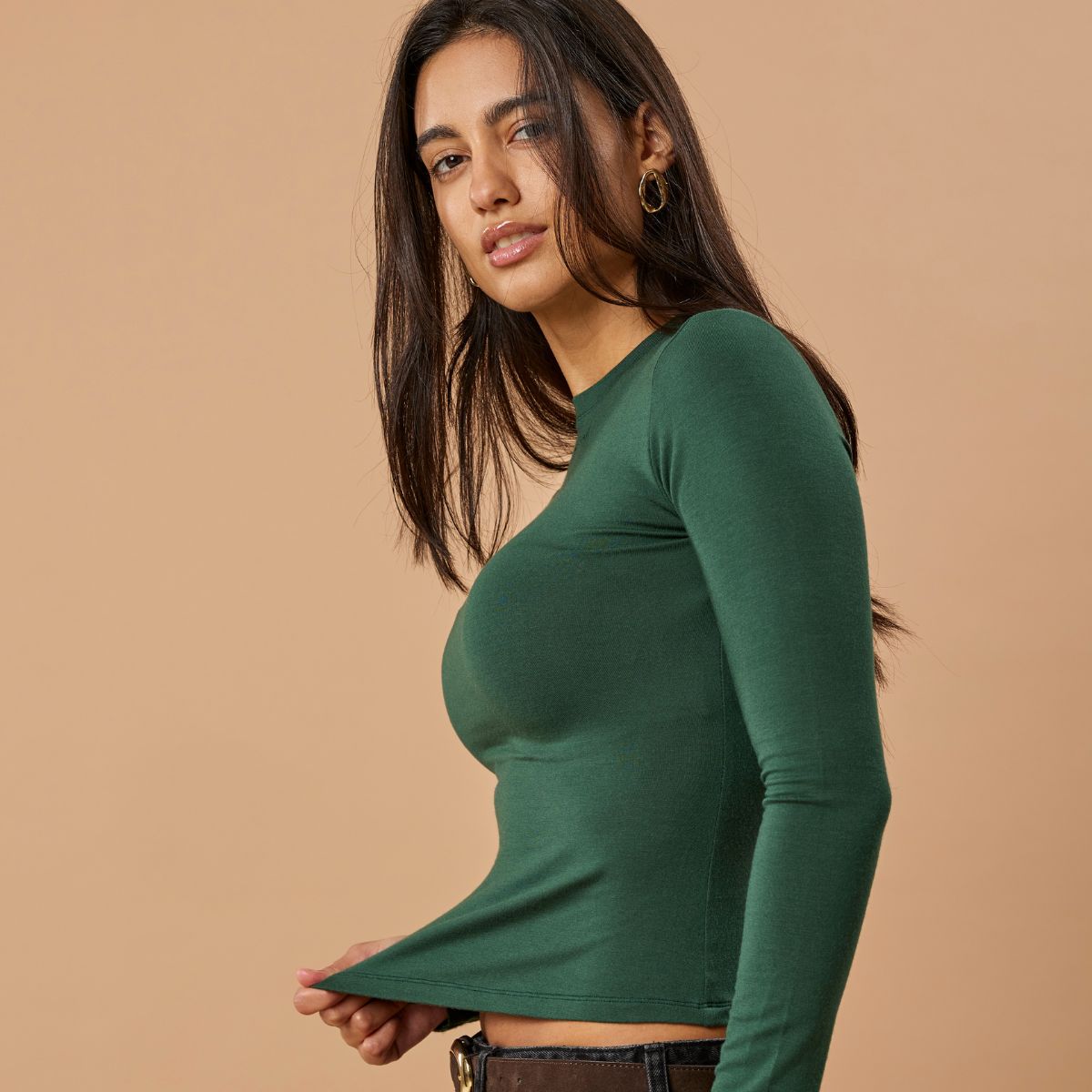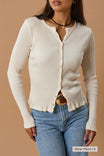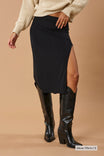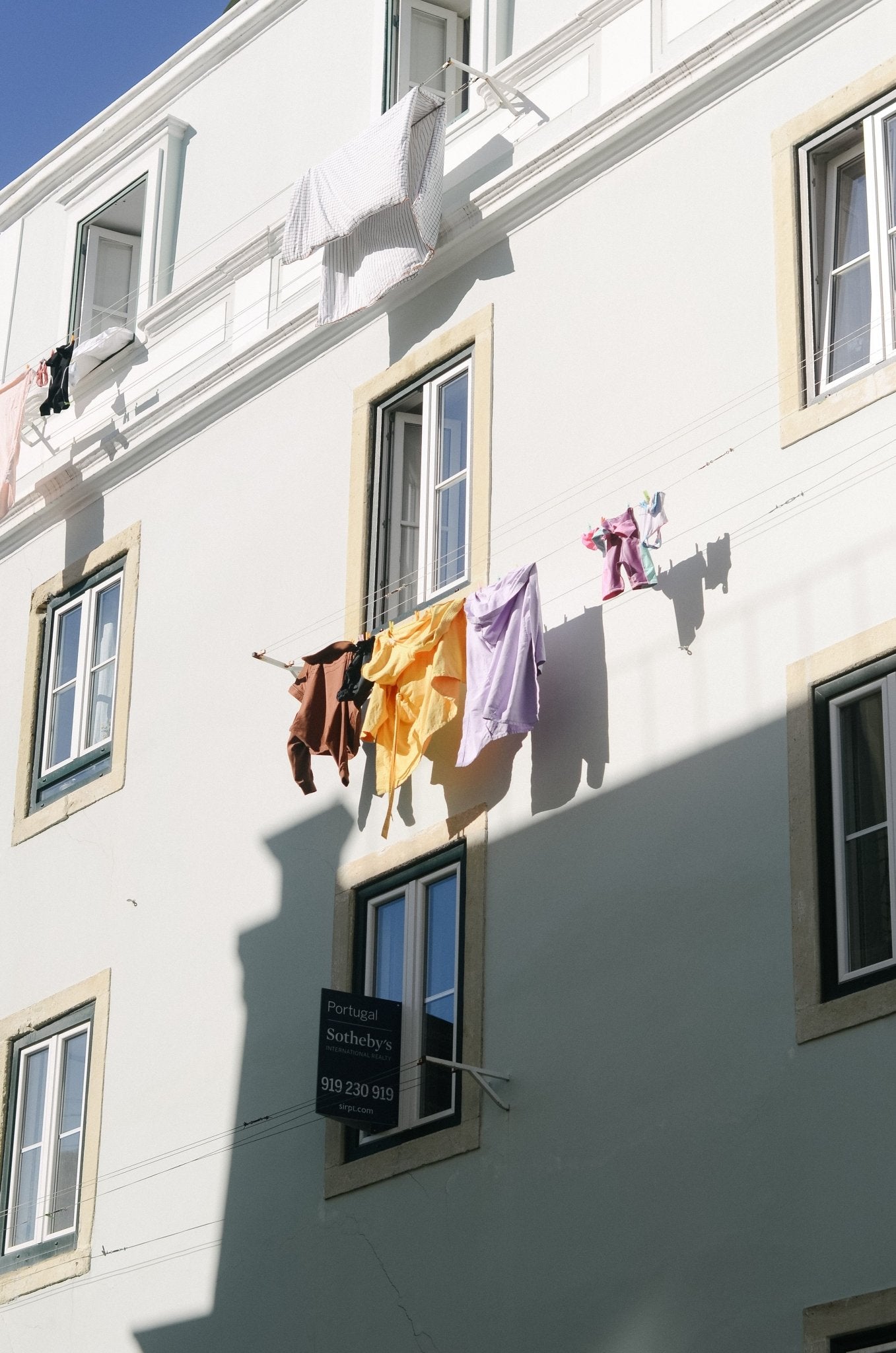Written by Katrin Bielawski - 7 Minute read
With so many problems going on these days - climate change, plastic pollution, deforestation, loss of coral reefs & biodiversity, water scarcity, just to name a few - the fashion industry is not necessarily top of mind for most people as either a problem or solution. Unfortunately, we have got some bad news for you - the clothing industry is dirty and a significant contributor to environmental & human damage. Good news is that sustainable fashion addresses many of these issues in ways you may not expect.

WHAT IS SUSTAINABLE FASHION?
Sustainable fashion brands create fashion in a way which is most considerate of humanity and the environment, reducing the environmental impact wherever possible. The ultimate goal is to have a system which works without leaving a negative footprint. Want to know more? Here are 8 reasons why sustainable fashion matters.
1. SUSTAINABLE FASHION SAVES NATURAL RESOURCES
A study from 2015 shows that 97% of what goes into making clothes are new resources, with only 3% of it being recycled materials. This adds up to an annual resource input of 98 million tons – including oil to produce synthetic fibres, fertilisers to grow cotton and an endless list of chemicals needed to dye & finish fabric.
Recycled fibers have proven to be a much more sustainable option, as they reduce pressure on virgin resources and tackle the growing problem of waste management. As a reference, for every 10,000 tons of ECONYL® raw material used for our swimwear, 70,000 Barrels of Oil & 57,100 tons of Co2 are saved compared to the production of virgin nylon.
2. SUSTAINABLE FASHION REDUCES YOUR CARBON FOOTPRINT
The global fashion industry emits a hefty amount of greenhouse gases per year, thus contributing massively and actively to global warming. One of the reasons is that the vast majority of our beloved clothes are petroleum-based and made from fossil fuels, including polyester, acrylic & nylon (check your clothing labels, you may be surprised). These materials require significantly more energy in the production phase than natural or recycled fibers.
Sustainable brands on the other side often use materials from natural or recycled fabrics that require significantly less to no chemical treatment, little water, less energy and no fertilizers or pesticides to grow. Most organic fabrics such as linen, hemp, organic cotton & TENCEL™ (made from sustainable wood pulp) are even biodegradable. These environmentally-sound fabrics go easy on the planet and are amazing sustainable alternatives.
3. SUSTAINABLE FASHION SAVES ANIMAL LIVES
This may not be news for you, but the fashion industry loves to kill for fashion. A common misconception is that leather for instance, is a by-product of the meat industry. However, this is not always the case. It’s estimated that the leather industry alone is slaughtering and killing over 430 million animals per year. Not going into more detail here as it’s a topic for itself, but if wish to educate yourself more on animal suffering in the fashion industry, follow this link. PETA has a plethora of articles on this topic.
Sustainable fashion brands have started to increasingly embrace the use of cruelty-free alternatives, and there’s one for nearly every piece of fashion materials - polyester made with trash from the oceans (sounds familiar, doesn’t it?), bags created from recycled seatbelts, plant-based compostable sneakers, silk created from yeast, and bio-fabricated vegan wool. But one of the most demanded leather alternatives these days comes from pineapples. The fabric is produced using the leaves of pineapples in the harvesting process, giving by-product waste a new purpose.
4. SUSTAINABLE FASHION REQUIRES LESS WATER
Water is a major resource for the fashion industry. It is used in the dyeing and finishing process for nearly all of our clothes. It takes an incredible amount of 2,700 litres of water to produce a single T-shirt. Cotton in particular is highly dependent on water, but is usually grown in hot and dry areas where water is a scarce resource already.
By contrast, organic cotton reduces water consumption by 91% as opposed to conventional cotton. However, only 1% of global cotton production to date is organic. This is mainly due to the much higher cost of non-GMO seeds, which often require additional investments into materials & machinery, which farmers only use for their organically grown crop.
Other sustainable fabrics that require little to no water during the production phase include linen, hemp, REFIBRA™ & recycled fibers like recycled cotton.

5. SUSTAINABLE FASHION SUPPORTS FAIRER & SAFER WORKING CONDITIONS
Believe it or not, but modern day slavery does exist. Minimum wages (if at all), endless working hours, unacceptable health & safety conditions and the prohibition of workers unions is what reality for most garment workers in the fast fashion sector looks like. Moreover, verbal and physical abuse are still common practise in many parts of the industry. A few informative documentaries exist on the social injustices of the fast fashion industry. Check out “The True Cost” or “Fashion Factories Undercover” to learn more about it.
Eco-ethical brands advocate for providing humane working conditions, health care and fair wages for their workers, which are typically above average. Generally, they show a larger purpose towards creating economic opportunities for those in need to end poverty. We all want to feel great about our clothes, and that includes feeling great about knowing under what conditions they were made. The well-being of people involved are just as valuable as the environment and animals, don’t you think?
6. SUSTAINABLE FASHION IS HEALTHIER FOR PEOPLE & PLANET
Fast fashion items often undergo a long and intense chemical process before ending up on our hangers. Around 8,000 different synthetic chemicals are used to dye, bleach and wet process garments. Those chemicals often cause diseases or even deaths among farmers and inflict serious birth defects on their children.
Some of these chemicals pose a real danger to our health as well, as our skin absorbs anything we put on it, including the chemicals in our clothes. Make sure to always wash new clothes before putting them on for the first time and check for garments with chemical content certification label such as OEKO-TEX®, GOTS, or BLUESIGN®.

7. SUSTAINABLE FASHION DOESN’T SUPPORT CHILD LABOUR
Around 170 million children are engaged in some form of garment work according to recent statistics from UNICEF, which is defined as “ “work for which the child is either too young – work done below the required minimum age – or work which, because of its detrimental nature or conditions, is altogether considered unacceptable for children and is prohibited”. This is a massive red-flag and the thought that children are sent to factories and conduct work that resembles modern day slavery to meet the fashion demands of the western world is simply unacceptable.
Brands that truly follow sustainable & ethical practises are transparent about it and provide details on the factory, working conditions and manufacturing process. To evaluate the ethical factor of a fashion brand, check for garments with certification label such Fair Wear Foundation, Fair Trade Certified, Ethical Trading Initiative or Certified B Corporation. These organizations protect their rights of garment workers in global supply chains and ensure that no child labor takes places. Further, they make sure that workers have been paid fairly for their work, often above current market rates, and work in safe conditions.
8. SUSTAINABLE FASHION TEACHES US HOW TO LOVE OUR CLOTHES AGAIN
It is just so easy to look at a gorgeous, finished piece of clothing in a store and forget that there’s a story and lifecycle behind it. Truth is, we are detached because the industry encourages us to be so. But being aware of all the downsides of this industry will hopefully lead to more conscious consumerism. One that is planet, animal & people friendly.
It’s time to recognize the impact of our buying decisions. Not as an inconsequential part of our modern lifestyles that changes with every season, but as an environmental and human responsibility that could greatly affect the future of our planet. At the end of the day, we can choose if we want to be part of the problem, or part of the solution and to quote Anne Lappe “Every time you spend money you cast a vote for the kind of world you want”.
BE THE CHANGE
At Narah Soleigh, we’re committed to work towards a sustainable future in fashion. By using as many upcycled, organic & recycled materials as possible, we seek to reduce pressure on resources in order to restore the balance between people & planet with regards to fashion.
Since clothing plays a big role in our daily lives, it’s an extremely accessible avenue for us all to affect change. Even if we may not be able to control the ongoings of a fashion company directly, we CAN educate ourselves, raise awareness on who made our clothes, what they’re made of and how their production impacts people and the planet.
In order words, choose to buy sustainably.






























Leave a comment
This site is protected by hCaptcha and the hCaptcha Privacy Policy and Terms of Service apply.